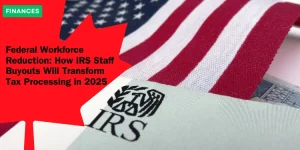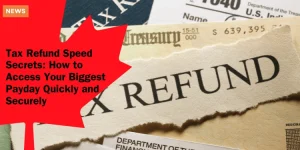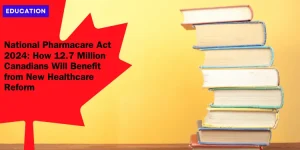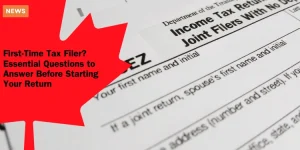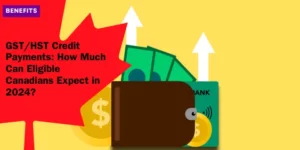Recovery Rebate Credit: Everything You Need to Know About the $1,400 IRS Stimulus Check
Anúncios
Understanding the Recovery Rebate Credit
Overview of the $1,400 Stimulus Payment Program
The Recovery Rebate Credit (RRC) was established in response to the COVID-19 pandemic to help Americans who did not receive or only partially received their stimulus checks.
Specifically, this program includes a payment of up to $1,400 per individual.
Anúncios
This initiative followed the multiple rounds of Economic Impact Payments (EIP) issued earlier in the pandemic.
The main goal: ensuring everyone who qualifies receives their entitled stimulus funds, thus providing much-needed financial support during these challenging times.
Anúncios
Why Some Americans Haven’t Received Their Payments
While the IRS sent out payments automatically, not everyone received their full entitlements.
There are several reasons why this might have occurred:
| Issue Category | Description | Impact | Potential Solutions |
|---|---|---|---|
| Non-filer Status | Individuals without recent tax filings | • Complete exclusion from automatic payments • Requires manual application |
• Alternative verification methods • Special filing portals |
| Data Inaccuracies | Outdated or incorrect filing information | • Payments sent to wrong accounts • Delayed processing |
• Data validation systems • Taxpayer update campaigns |
| Partial Disbursement | Incomplete benefit amounts received | • Financial shortfalls • Need for reconciliation |
• Automated tracking systems • Clear dispute resolution |
These circumstances led to the establishment of the Recovery Rebate Credit, designed to address any oversights and ensure every eligible American receives their due payments.
Connection Between Recovery Rebate Credit and COVID-19 Stimulus Checks
The Recovery Rebate Credit directly ties to the COVID-19 stimulus checks.
Essentially, if you missed out on any of the stimulus payments, the RRC gives you a chance to claim what you should have received.
The IRS used 2021 tax returns to automatically issue earlier payments.
If you didn’t file a 2021 tax return or if errors were present in the system, you could miss out.
The RRC serves as a safety net, allowing you to claim unpaid stimulus amounts through your 2021 tax return.
This ensures the economic relief intended for you truly reaches your hands.
Important Deadlines and Eligibility
Claiming by April 15, 2025
It’s imperative to note that the cutoff date for claiming the $1,400 Recovery Rebate Credit is April 15, 2025.
This deadline is crucial for taxpayers who haven’t received their full stimulus payment yet or missed out entirely.
Mark this date on your calendar because missing it means you’ll forfeit your opportunity to claim these funds.
Income Thresholds for Full Eligibility
To qualify for the full $1,400 stimulus payment, your adjusted gross income (AGI) must not exceed certain thresholds. Specifically:
- 💵$75,000 for single filers
- 💵$150,000 for married couples filing jointly
If your income surpasses these limits, your payment amount will be gradually reduced.
Ensuring your AGI falls within these limit helps you receive the maximum possible credit.
Filing 2021 Tax Returns
Even if you had minimal or no income in 2021, you must file a 2021 tax return to claim the Recovery Rebate Credit.
Filing a return is necessary for the IRS to verify your eligibility and process your payment.
This requirement means some non-filers, including low-income individuals or those who are usually not required to file, should still complete and submit a return.
Whether you’re below the income threshold or have minimal income, ensuring you file your 2021 tax return before the April 15, 2025 deadline is crucial.
This step is mandatory to claim your due credit and secure your $1,400 stimulus payment.
By understanding these deadlines, income thresholds, and filing requirements, you can take the essential steps needed to claim your Recovery Rebate Credit.
Next, let’s delve into identifying individuals still eligible for this payment.

Who Can Still Claim the Payment
Eligible Individuals Who Haven’t Filed 2021 Tax Returns
You may still be eligible for the $1,400 Recovery Rebate Credit if you haven’t yet filed your 2021 tax returns.
Even if your income was minimal or nonexistent, it’s important to file your tax return to claim this credit.
The IRS has identified a significant number of people who did not file their 2021 returns but are eligible for the credit.
The deadline to file and claim your payment is April 15, 2025.
Special Circumstances for Partial Payments
If you received only partial payments from the previous stimulus rounds, you might still qualify for the remainder through the Recovery Rebate Credit.
For instance, if you missed out on the full amount of the third stimulus check sent in 2021, you can claim this missing portion when you file your 2021 tax return.
It’s crucial to correctly report this in the Recovery Rebate Credit section to ensure you receive the correct amount.
Exclusion Criteria for Recipients of Full Stimulus Payments
On the other hand, if you received the full amount of the third stimulus check as well as earlier payments, you are not eligible for additional payment through the Recovery Rebate Credit.
The program is specifically designed to assist individuals who either didn’t receive any stimulus checks or only received partial payments during the COVID-19 pandemic.
As you consider your own situation or that of a loved one, it’s essential to understand the specifics of your eligibility and the steps needed to claim any remaining payments.
In the next section, we’ll discuss how to verify your eligibility and ensure you haven’t missed out on any payments.
How to Check Your Eligibility
Steps to Review Your 2021 Tax Return
To determine if you’re eligible for the $1,400 Recovery Rebate Credit, start by reviewing your 2021 tax return.
Look specifically at the section that asks about the Recovery Rebate Credit.
If you entered an amount or left it blank, you might be able to claim the credit if you received less than the full amount of the stimulus checks.
Using IRS Online Account to Verify Previous Stimulus Payments
The IRS online account is a useful tool to verify the stimulus payments you received. Here is how you can do this:
- Log in to your IRS online account.
- Navigate to the “Tax Records” page.
- Check the “Economic Impact Payment Information” section to see the amounts of stimulus payments you received.
This will help you ascertain whether you are eligible for additional funds through the Recovery Rebate Credit.
Understanding the Economic Impact Payment Information Section
The “Economic Impact Payment Information” section in your IRS account will list the payments you received during the COVID-19 pandemic.
It is important to review:
- 💵The total amount of stimulus payments received.
- 💵The specific rounds of payments you benefited from.
This information is vital for figuring out if you qualify for more based on the Recovery Rebate Credit.
If you notice any discrepancies or missing payments, you might be eligible to claim additional funds.
Each of these steps is essential for assessing your eligibility for the Recovery Rebate Credit and ensuring you receive any funds you are entitled to.
Next, we will delve into the process of claiming your payment, including how to file your 2021 tax returns if you haven’t already.
Claiming Your Payment
Process for Filing 2021 Tax Returns to Claim the Credit
If you are among the eligible taxpayers who did not receive the full $1,400 stimulus payment, you can still claim the Recovery Rebate Credit (RRC) by filing your 2021 tax returns.
Here’s how to get started:
- Gather Your Documents: Collect all necessary documents, including any income statements (even if minimal), previous tax returns, and stimulus payment notices from the IRS.
- Use Tax Preparation Software: These programs can guide you step-by-step through the process of filing your 2021 tax return and claiming the RRC. Popular options include TurboTax, H&R Block, and IRS Free File.
- Complete Form 1040: On Form 1040 or Form 1040-SR, fill in the Recovery Rebate Credit Worksheet to calculate the credit you are entitled to.
- Submit Your Return: File your completed tax return with the IRS electronically or by mail. Make sure to keep copies for your records.
Automatic Payment Distribution Methods
Once your 2021 tax return is processed by the IRS, they will automatically issue your missing stimulus payment. There are two common ways you might receive this payment:
- 💵Direct Deposit: If you included your bank account information when filing, the payment will be directly deposited into your account. This method is generally the quickest.
- 💵Paper Check: If no bank details were provided, a paper check will be mailed to the address indicated on your tax return. This can take a bit longer compared to direct deposit.
What to Expect After Filing
After submitting your tax return, here’s what you should anticipate:
- Notification Letters: The IRS will send you a notification letter confirming the receipt and processing of your tax return. This letter will outline any Recovery Rebate Credit amount you are entitled to and how it will be delivered.
- Payment Timeline: Usually, direct deposits are completed within a few weeks, whereas paper checks might take several weeks to arrive. Keep an eye on your bank account or mailbox during this period.
- Track Your Payment: Utilize the IRS’s “Get My Payment” tool available on their website to track the status of your payment.
Following these steps and understanding the timeline will ensure you get your due payment swiftly and efficiently.


